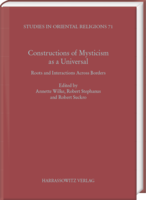|
weitere Titel zum Thema:
Download:
Bitte beachten Sie: Mit digitalen Produkten in Ihrem Warenkorb
wird die Bezahlung nur per PayPal möglich. Der Download dieser Produkte wird bereitgestellt, wenn die Bezahlung bestätigt ist. This volume charts the fascinating history of the multiple roots and interactions which underlie the modern popular understanding of mysticism as a universal phenomenon across epochs and cultures. In an unprecedentedly broad interdisciplinary exchange, international scholars from different disciplines critically examine the concept and mental maps of the term ‘mysticism’ which enjoyed a central role in classical theories of religion, as developed in fields like Psychology, Sociology, History or Phenomenology. However, mysticism lost its prominence after the controversial debates in the second half of the twentieth century about whether mystical experience should be considered universal or socio-culturally constructed.
After four decades of silence, this volume ventures a stimulatingly novel approach to mysticism as a universal, transcultural category from the perspective of the Cultural Studies of Religion. This includes the question of how a European concept fraught with Christian notions was transferred to non-European cultures and secular contexts, and thereby attained new meanings and functions in daily life. Fresh insights are gained by examining three major areas: a) mysticism’s potential for boundary crossing in earlier centuries of European history; b) the history of mysticism research in context – from the mysticism boom at the fin de siècle and early twentieth century to its renewed attractiveness in American counterculture and the psychedelic movement to its transformation into postmodern spirituality; and c) universal mysticism’s absorption of Eastern religions (notably Buddhism, Hindu traditions, and Daoism) as well as Asian insiders’ self-conceptions. |
|||||||||||||||||||||||||||||||||||||||||




